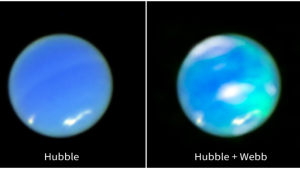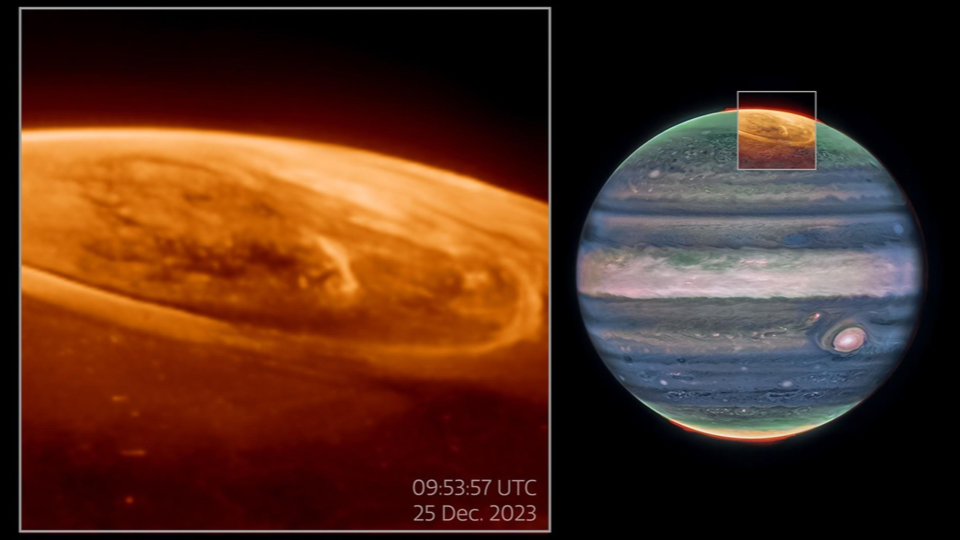
Earth isn’t the only world that has aurora. In the past, all the worlds with strong magnetic fields have put on some sort of an auroral display. From Mercury x-ray aurorae that were spotted most recently by BepiColombo, to Jupiter, Saturn, and Uranus’s polar light shows that appear in many different colors, including IR and UV, world after world has channeled electrons from the Sun through their magnetic fields and generated light.
Now, for the first time, JWST’s powerful gaze has unambiguously captured light from aurora in the atmosphere of Neptune.
Back in 1989, the Voyager 2 mission data wasn’t quite good enough to say “Yes – we definitely saw aurora.” The cameras on Voyager just weren’t sensitive enough in the right colors. Now, 35-some odd years later, the JWST has partnered up with our overactive Sun to get definitive images.
JWST and HST both looked at Neptune in June 2023. In JWST’s infrared images, light from ionized Hydrogen molecules. This particular ion is created in auroras where the Sun’s particles knock an electron out of tri-hydrogen.
Aurora at Neptune looks different than aurora on other worlds because Neptune has a weirdly tilted magnetic field. For unknown reasons, its magnetic field sticks out at a 45-degree angle, which causes its aurora to extend out around mid-latitudes like a weirdly patchy fog. This is one of those particularly beautiful oddities of our solar system.
Here is to hoping that HST and JWST are able to team up to continue capturing these kinds of images for many years to come.
Neptune isn’t the only world that JWST has explored for aurora.
In December 2023, JWST observed ionized hydrogen molecules in the atmosphere of Jupiter. This massive gas giant’s magnetic field is well aligned with its rotation, and the glowing gas appears as a crown on Jupiter’s northern pole. What’s particularly cool is that Jupiter’s aurora is bright enough that JWST can take short exposures and see how the aurora evolves over time from half a solar system away.

